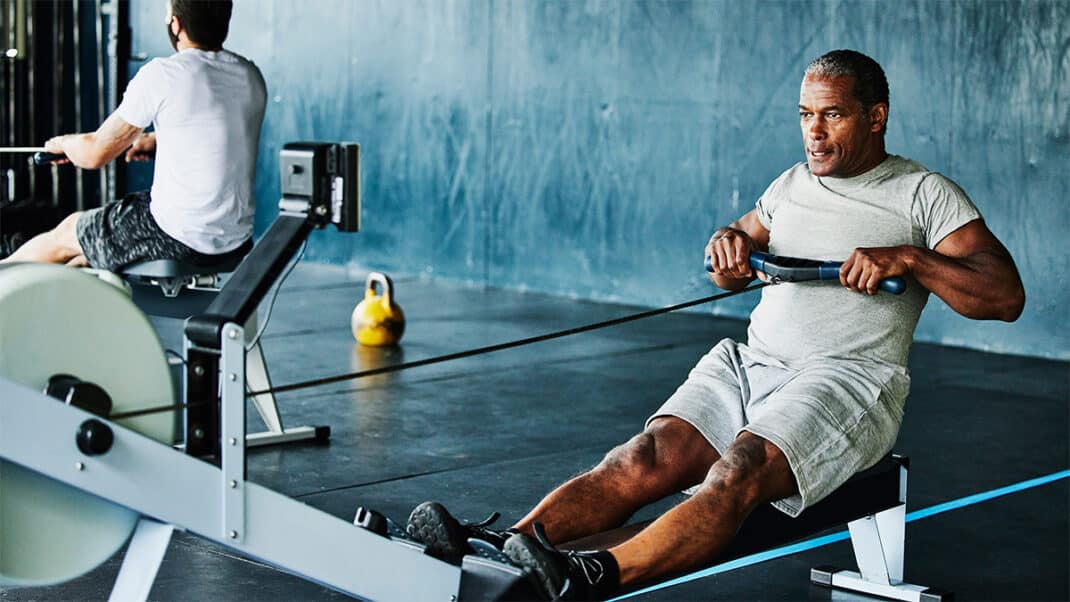Help for Hunched-Over Backs

Do you have a hard time raising your arms to wash your hair, putting dishes in an overhead cupboard or pulling on a sweatshirt? You may be suffering from excessive thoracic kyphosis.
ETK is a disproportionate forward rounding or curvature of the middle and upper back, also known as the thoracic spine (Kendall, McCreary & Provance 2005). Everyday movements and athletic performance can be limited by ETK, as this excessive rounding of the middle and upper back can affect the function of your breathing, shoulders, spine and arms.
So what causes ETK, and what can you do about it? Justin Price, MA, creator of The BioMechanics Method®, shares some suggestions.
Possible Causes of ETK
The most common causes of ETK include the following:
- musculoskeletal compensations
- environmental factors
- exercise/activity choices
- psychological stressors
For example, musculoskeletal imbalances anywhere in the body can cause ETK. Moving the head forward of its optimal position to focus on a small object like a handheld electronic device causes the spine to round forward in order to help hold up the head (Kendall, McCreary & Provance 2005). This is akin to having a large fish on the end of a flexible fishing rod. The rod will bend forward to accommodate the extra weight. Over time, this forward head position can lead to ETK.
Prolonged periods of the spine being rounded forward, as in those postures required for bike riding and/or indoor cycling, martial arts, freestyle swimming and gardening, can also contribute to ETK.
Corrective Exercise
Several strategies can alleviate ETK. For example, corrective exercise and self-massage are very effective for helping make your muscles healthier and improving posture. If you think you are suffering from ETK, try the following exercises or consider working with a certified specialist who can help you with designing a corrective exercise program to improve your posture.
Exercise 1: Two Tennis Balls on Upper Back. This technique helps straighten your spine in the middle- and upper-back region.
Lie on the floor on your back with knees bent. Place a tennis ball on either side of your spine in line with the bottom of your shoulder blades. Use a large pillow to support your head so you don’t feel too much pressure from the tennis balls. Bring your arms across your chest and hug yourself. Find a sore spot and maintain pressure on it until it releases (10–15 seconds). Then move the balls to another sore spot by scooting your butt and body down so the balls roll up your spine. Bring the pillow with you each time you scoot. Spend about 2–3 minutes each day on the entire area.
Exercise 2: Tennis Ball on Abdominals. This technique releases tension in the abdominals and hip flexor muscles to help loosen up your hips and low back.
Lie on the floor face down. Place a tennis ball on your stomach just below the bottom of your rib cage to the right of your bellybutton. Find a sore spot and maintain pressure on it until it releases (5–10 seconds). Then move to the next spot by scooting your body up so the ball moves down.
Do this all along your abdomen, past your bellybutton, to the top of your hips. Repeat the process on the left side. Do each side for about 1–2 minutes.
Diaphragmatic breathing techniques can help decrease stress and mobilize the spine.
Lie on your back with your knees bent (support your head with a small pillow, if necessary). Place your hands palm-down around the bottom of your rib cage. Practice breathing in and out through your nose. As you breathe in, focus on the lower ribs expanding and pushing into the palms of your hands. Hold the breath (a diaphragmatic contraction) for a few seconds and then slowly breathe out. Do a total of 10-15 breaths every day.





